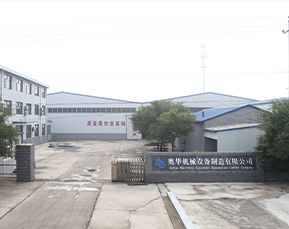 Afrikaans
Afrikaans  Albanian
Albanian  Amharic
Amharic  Arabic
Arabic  Armenian
Armenian  Azerbaijani
Azerbaijani  Basque
Basque  Belarusian
Belarusian  Bengali
Bengali  Bosnian
Bosnian  Bulgarian
Bulgarian  Catalan
Catalan  Cebuano
Cebuano  Corsican
Corsican  Croatian
Croatian  Czech
Czech  Danish
Danish  Dutch
Dutch  English
English  Esperanto
Esperanto  Estonian
Estonian  Finnish
Finnish  French
French  Frisian
Frisian  Galician
Galician  Georgian
Georgian  German
German  Greek
Greek  Gujarati
Gujarati  Haitian Creole
Haitian Creole  hausa
hausa  hawaiian
hawaiian  Hebrew
Hebrew  Hindi
Hindi  Miao
Miao  Hungarian
Hungarian  Icelandic
Icelandic  igbo
igbo  Indonesian
Indonesian  irish
irish  Italian
Italian  Japanese
Japanese  Javanese
Javanese  Kannada
Kannada  kazakh
kazakh  Khmer
Khmer  Rwandese
Rwandese  Korean
Korean  Kurdish
Kurdish  Kyrgyz
Kyrgyz  Lao
Lao  Latin
Latin  Latvian
Latvian  Lithuanian
Lithuanian  Luxembourgish
Luxembourgish  Macedonian
Macedonian  Malgashi
Malgashi  Malay
Malay  Malayalam
Malayalam  Maltese
Maltese  Maori
Maori  Marathi
Marathi  Mongolian
Mongolian  Myanmar
Myanmar  Nepali
Nepali  Norwegian
Norwegian  Norwegian
Norwegian  Occitan
Occitan  Pashto
Pashto  Persian
Persian  Polish
Polish  Portuguese
Portuguese  Punjabi
Punjabi  Romanian
Romanian  Russian
Russian  Samoan
Samoan  Scottish Gaelic
Scottish Gaelic  Serbian
Serbian  Sesotho
Sesotho  Shona
Shona  Sindhi
Sindhi  Sinhala
Sinhala  Slovak
Slovak  Slovenian
Slovenian  Somali
Somali  Spanish
Spanish  Sundanese
Sundanese  Swahili
Swahili  Swedish
Swedish  Tagalog
Tagalog  Tajik
Tajik  Tamil
Tamil  Tatar
Tatar  Telugu
Telugu  Thai
Thai  Turkish
Turkish  Turkmen
Turkmen  Ukrainian
Ukrainian  Urdu
Urdu  Uighur
Uighur  Uzbek
Uzbek  Vietnamese
Vietnamese  Welsh
Welsh  Bantu
Bantu  Yiddish
Yiddish  Yoruba
Yoruba  Zulu
Zulu take-up pulley
Understanding Take-Up Pulleys A Critical Component in Conveyor Systems
Take-up pulleys play a crucial role in the efficient operation of conveyor systems, particularly in industrial settings where the handling of materials is essential. These components are integral for maintaining proper tension in the conveyor belts, ensuring smooth movement and reducing wear and tear.
A take-up pulley is generally located at the end of a conveyor system. Its primary function is to adjust the tension of the belt, compensating for the elongation that can occur due to wear, stretching, and load variations over time. Without a properly functioning take-up pulley, the conveyor belt might become slack, leading to misalignment, increased friction, and potentially, system failure.
The design of a take-up pulley can vary based on the specific application. There are several types, including gravity take-up units and screw take-up units. Gravity take-up systems use weights to maintain tension, allowing for automatic adjustments based on the belt’s movement. This passive system can be quite efficient; conversely, screw take-up units require manual adjustments, which can be more labor-intensive but provide a more precise tensioning capability.
Tensioning the belt is vital for several reasons. Proper tension ensures that the belt operates at the correct speed and reduces the chances of slipping. It also optimizes the power consumption of the conveyor system, enhancing its overall efficiency. Furthermore, a well-maintained tension helps in achieving a longer lifespan for both the pulley and the belt, thus reducing downtime and maintenance costs.
take-up pulley

Installation and maintenance of take-up pulleys should not be overlooked
. It is crucial for operators to understand the setup and operational parameters for these components to ensure optimal performance. Regular inspections can help detect any signs of wear or misalignment early, allowing for timely interventions that can avert larger operational issues.In addition to their mechanical functions, take-up pulleys are also significant from a safety perspective. A loose conveyor belt can pose serious risks to workers and equipment. By ensuring that take-up pulleys function correctly, facilities can maintain a safer working environment, minimizing the risk of accidents caused by belt failures or misalignments.
As industries evolve, the technology behind take-up pulleys has also advanced. Innovations such as automated monitoring systems can provide real-time data on belt tension, allowing for prompt adjustments and optimized operation. This technological progress aids in enhancing productivity and safety standards across various sectors, from mining and agriculture to manufacturing and logistics.
In conclusion, take-up pulleys are vital components that ensure the smooth operation of conveyor systems. Their ability to maintain belt tension not only enhances efficiency but also promotes safety in the workplace. Regular maintenance and understanding the different types of take-up pulleys can help industries maximize their performance and reliability, crucial for any business reliant on conveyor systems for material handling.
-
Revolutionizing Conveyor Reliability with Advanced Rubber Lagging PulleysNewsJul.22,2025
-
Powering Precision and Durability with Expert Manufacturers of Conveyor ComponentsNewsJul.22,2025
-
Optimizing Conveyor Systems with Advanced Conveyor AccessoriesNewsJul.22,2025
-
Maximize Conveyor Efficiency with Quality Conveyor Idler PulleysNewsJul.22,2025
-
Future-Proof Your Conveyor System with High-Performance Polyurethane RollerNewsJul.22,2025
-
Driving Efficiency Forward with Quality Idlers and RollersNewsJul.22,2025





























